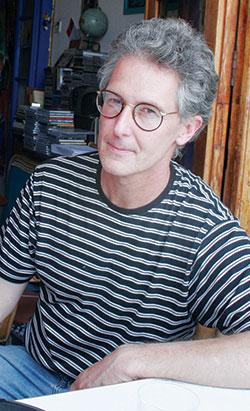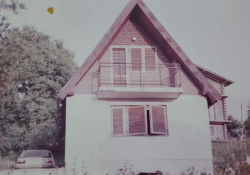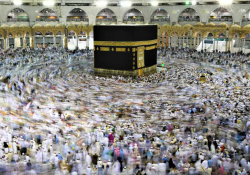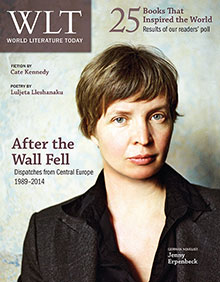The Problem of the Poem: Reading Bruno Montané Krebs
To complement “Mapping Life through Poetry,” his interview that appears in the November 2014 print edition of WLT, Ryan Long offers the following appreciation of the work of Bruno Montané Krebs.
The poetry of Bruno Montané Krebs (b. 1957, Valparaíso, Chile) is as tactile as it is visual. The material quality that defines his poems may have something to do with Montané Krebs’s role as a co-founder of Infrarealism, a poetic movement from the 1970s fictionalized in fellow co-founder Roberto Bolaño’s 1998 novel The Savage Detectives under the guise of Visceral Realism. Infrarealism combined neologisms and colloquial language with imagery that emphasized how ideas and feelings are at least as material as actions. With materiality as its touchstone, Montané Krebs’s work tackles the problems posed by relating life and language with finesse and daring. The most significant risk his poems take is to construct a visual and tactile image that conveys mental and emotional states without reifying or instrumentalizing them. When I had the opportunity to correspond with Montané Krebs via email, he explained the primary role that tension plays in his writing process. This tension appears in his poems as a tightrope extended between abstraction and objectification, a wire that his writing walks with surprising ease.
Tension appears in his poems as a tightrope extended between abstraction and objectification, a wire that his writing walks with surprising ease.
In 1976 Montané Krebs moved from Mexico City to Barcelona, where he has lived ever since. His poems have appeared in more than twenty periodicals and anthologies, including the magazines and journals Casa de las Américas (1975), Revista de bellas artes (1975), Punto de partida (1976), Trilce (1982), and Litoral (1999); and the books Pájaro de calor (ocho poetas infrarrealistas) (1976), Muchachos desnudos bajo el arcoíris de fuego (1979), and Hora zero: La última vanguardia latinoamericana de poesía (2000). He has also published several of his own books, including El maletín de Stevenson / El cielo de los topos (2002), Mapas y escritos (2009), and, most recently, a collection of his poems translated into Catalan, Setanta-set poemes (2014). A selection of thirteen poems, including their translations into English and German, is also available on the website Dhamma Moon Poetry (dhammamoon.org).
One of the writers Montané Krebs most admires is the French poet and Nobel laureate Saint-John Perse. Montané Krebs’s poetry’s emphasis on nature finds common thematic ground, for example, with Perse’s book-length dedication to the sea, Amers (1957; Eng. Seamarks, 1958). Whereas Perse’s description of humanity’s relation to the oceans is, in general, vast in scale and often narrative in form, Montané Krebs’s imagery tends to be more intimate, quotidian, material, and precisely defined by a particular act of observation, as in the recent poem, “Pie de coral” (Coral foot), which opens with the lines, “Abrí los ojos y vi que mis pies / eran de coral” (I opened my eyes and saw that my feet / were made of coral). Whether in the first or third person, Montané Krebs’s poems tend to prioritize the act of looking. Yet his poems hardly stay on the surface of things, especially because the images and feelings they produce through original—and sometimes startling—juxtapositions of words guide the reader to another space and time from the one initially introduced in the poem, a space and time often defined in clear mental and emotional terms, as in the combination of rest and expectation communicated by the central lines of “Pie de coral”: “Apoyé la cabeza en una roca / y vi inclinarse el cielo / como una manta a punto / de caerse de la cama” (I rested my head on a rock / and I saw the sky slide downward / like a blanket on the verge / of falling off the bed).
A clear reference to the fear and violence that permeated Chilean life at that time, “Carta” is somewhat exceptional in relation to much of Montané Krebs’s work. Rarely do his poems speak so specifically about a particular historical time and place.
Montané Krebs emphasizes how much his poems are motivated by tensions he finds within and among different words, tensions that often take on a notably material form. Sensory experience and its often-overwhelming manifestations take center stage in an early poem, “Carta” (Letter, 1975). Three lines from “Carta” stand out in this regard: “Santiago es triste al atardecer. (. . .) En la noche las farmacias / huelen a cuartel” (Santiago is sad as the day closes. (. . .) At night the pharmacies / smell of barracks). Montané Krebs published “Carta” while he was living in Mexico City, exiled from Chile, along with his family, after Pinochet’s 1973 coup d’état. A clear reference to the fear and violence that permeated Chilean life at that time, “Carta” is somewhat exceptional in relation to much of Montané Krebs’s work. Rarely do his poems speak so specifically about a particular historical time and place. In regard to the lines about the pharmacies, they are less indicative of Montané Krebs’s work in terms of being about Chile under the dictatorship than they are for doing three things that almost all of his poems do: produce remarkably condensed evocations of materiality, make startling associations, and emphasize the human body’s relation to the world through sensory experience. The reference to pharmacies, for example, relies on the pervasiveness of smells and how difficult it is to ignore them, and thus reinforces the fact that the limits between spaces typically not associated with one another have been violated. Pharmacies, as sites of first aid and healing, are here intimately connected with military repression and torture, the latter often a perversion of medical procedures.
The material world created through Montané Krebs’s combination of unusual juxtapositions and sensory experience is often defined more by nature than society. The natural spaces his poems create, however, are generally not separated from human activity. People in Montané Krebs’s poems, often the narrator or addressee, observe, map, write about, and transform nature, performing acts whose importance is reinforced by the unique combinations of words, images, and ideas that Montané Krebs uses to describe them. “Reconocerse” (To know oneself, 1979) is an example of Montané Krebs’s use of unusual associations and of the careful organization of the poetic line. The poem opens, “Con luz de árboles cortas raíces en la tarde” (With light of trees you sever roots in the afternoon). Something intangible and enigmatic (what is a tree’s light?) has the power to cut, and references to trees (“árboles” and “raíces”) stand framed by references to light (“luz” and “tarde”). At the center of the line is the human subject, literally cutting open a space to occupy between trees and their roots, in the light of the retiring day.
The poem “Interferencias” (Interferences, 1979) situates human subjects within nature and also in relation to the passing of time. In this poem, Montané Krebs combines sound, vision, and rhythm in a description of a present moment written, paradoxically, in the past. The verbs are all in the present tense, until the final word of the final line, when the verb, “escribía” (he was writing), appears in relation to the writer, whose feet the rain reaches even though he is inside. The first two lines combine sound and sight and allude to a cutting light, similar to the one in “Reconocerse”: “Tocan a la puerta y la luz separa el rostro / del cuerpo” (They knock on the door and the light separates the face / from the body). The tactility introduced by the knocking on the door that begins the poem reaches intense heights in the middle of the poem with the lines “En el frío fondo del texto / los hongos se reproducen” (In the text’s cold depth / mushrooms reproduce).
It is as if the poem the poet produced returned, in the present, to overwhelm him and the act of creation. The voice yields to the page, the passage of time, and the forces of nature.
The next lines continue producing the sensation of dampness with an interesting paradox: “La humedad chisporrotea con las cerillas / que caen” (Humidity sizzles with the matches / that fall). Tactility and writing then come together: “Los dedos dibujan en la arena frases / donde se habla / de naufragios guerras locales / levantamientos de pueblos” (Fingers draw sentences in the sand / where one speaks of / shipwrecks local wars / people’s uprisings). Writing in the sand is transferred to the sound of speaking in a way that emphasizes the tension between written letters and the human voice integral to poetry. The moment of the poem’s composition, necessarily in the past, struggles to stay in the present at the text’s conclusion: “Afuera comienza a llover y el agua / lentamente se desliza hasta mojar / los pies del que escribía” (Outside it begins to rain and water / slowly slides along until dampening / the feet of the one who was writing). The designation “outside” comes naturally at first, since it could refer to the sand from the previous sentence; but, surprisingly, it appears in opposition to the space of writing, a space whose dryness is short-lived since the feet of the writer working there begin to feel the humidity and dampness that appear first in the text’s cold depth and the mushrooms that grow there. It is as if the poem the poet produced returned, in the present, to overwhelm him and the act of creation. The voice yields to the page, the passage of time, and the forces of nature.
Navigating the world with written language is the title subject of Montané Krebs’s 2009 collection, Mapas y escritos (Maps and writings). Its poems attest to Montané Krebs’s continuing interest in writing about the tensions produced by mapping experience with the limited but necessary tool of language. As in the poem “Reconocerse,” in “Mapa 6” (Map 6) the verb tenses function in tandem to situate the narrator at the edge of the present. The past tense appears only twice, at the end of each stanza, as describing something the narrator has only just now been able to acknowledge: “ésta es la ayuda / que yo aún no reconocía” (this is the help / that I still did not recognize), and “una mirada que en mí / no conocía” (a gaze that in me / I did not know). The previously unrecognized help and unfamiliar gaze stand at the precipice of the creative act, the act of mapping life through poetry: “Con este mapa encuentro / algo que no busco” (With this map I find / something I do not seek). Like the light that divides the trees in “Reconocerse” and the water that delineates past and present in “Interferencias,” the map in “Mapa 6” delimits the narrator and the poem in a moment of understanding whose duration is as fleeting as it is an act of faith: “Por un instante me permito creer / que éste es el último mapa, / que ésta es la ofrenda / de los más soterrados indicios” (For an instant I allow myself to believe / that this is the final map, / that this is the offering / of the most concealed signs). Like the play of times between writing and the imposition of the finished work in “Interferencias,” and like the use of the past tense at the end of both stanzas in “Mapa 6,” this moment of understanding is, paradoxically, one step behind itself. Note the use of anaphora in the examples of the final map and the offering: the pronoun “this” announces what is to come; it relies on the future of the sentence for its significance; and it is unable to sustain its full meaning in the present.
The tensions that function within Montané Krebs’s poems elucidate a career-long effort to situate the poetic voice in the world of the poem and the world of experience; and to situate the poem as an important expression of our relation to the world and of our understanding of that relation, which encompasses thoughts, emotions, perceptions, fears, and an essential resistance to routines and banality. To use the paronym that Montané Krebs highlights in the conversation that I had with him, the verbal expression that emerges from poetry is at once a problem and a solution.
University of Maryland










